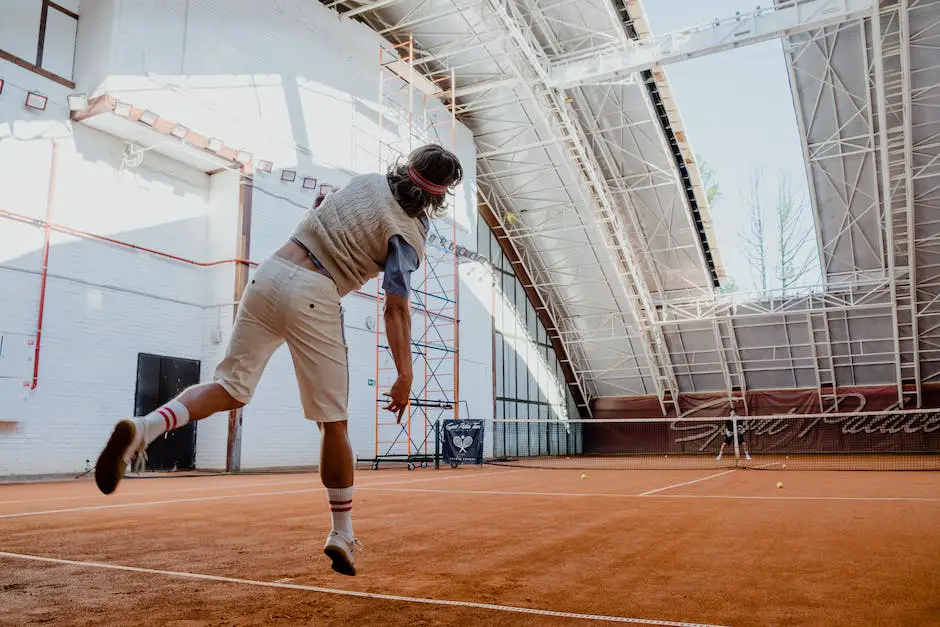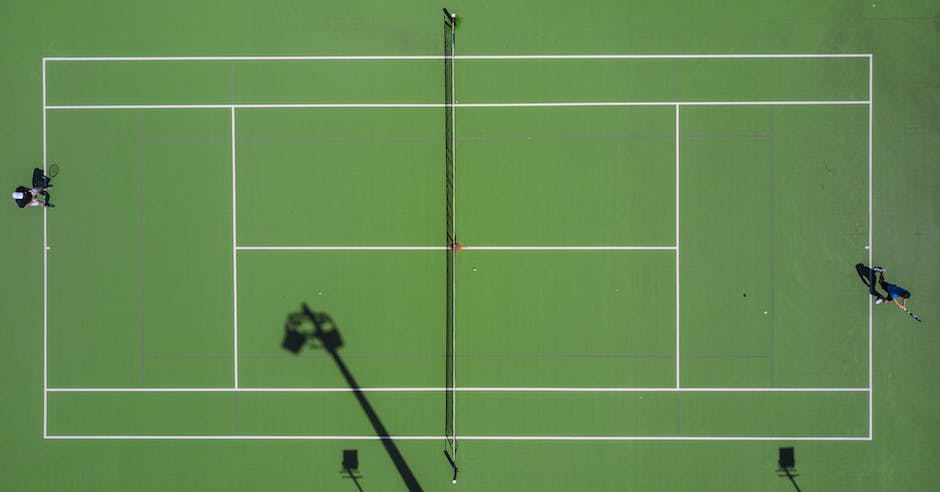In the dynamic realm of sports, tennis stands as a prominent cornerstone, brimming with its own unique set of strategies, rules, and iconic figures. Within this large framework, doubles tennis has carved out a definitive niche by fostering an engaging play of teamwork and competitive spirit. This essay delves into an extensive exploration of doubles tennis, right from its inception to its current state of play. With a fine blend of historical recountings, influential milestones, iconic tournaments, along with the champions that have graced this aspect of the sport, this paper endeavors to provide a comprehensive understanding of doubles tennis and its journey so far.
Origins and Early Developments of Doubles Tennis
Origins of Doubles Tennis
The roots of tennis can be traced all the way back to the monastic cloisters in northern France during the 12th century, but the game that we know today as ‘doubles tennis’ did not start taking shape until the 16th century. The early variant of the game was known as ‘jeu de paume’ or ‘game of the palm’, which involved using the hand instead of a racket.
Development of Rules and Gameplay of Doubles Tennis
While the rules for singles tennis were established during the formation of the All England Club, the rules for doubles were not formulated until later. The United States National Lawn Tennis Association, now known as the United States Tennis Association (USTA), formed in 1881, is known to have started documenting the rules for doubles at that time.
The essential rules for doubles tennis were the same as singles with minor variations. The major difference was the inclusion of the ‘alleys’ or ‘tramlines’ on either side of the court for doubles play. A doubles court is 36 feet wide, compared to 27 feet wide for a singles court.
The standard scoring system was also modified to include a deuce, which was followed by two clear points to win the game, instead of a single point as in singles.
Key Regions and Individuals
England is regarded as the birthplace of modern tennis, and it was here that the format of doubles tennis truly began to develop. The grass-court tournament, Wimbledon, originally established for singles, started a gentlemen doubles event in 1879, and a ladies doubles and mixed doubles event in 1913.
USA became an early adopter of doubles tennis. The U.S. National Men’s Doubles Championship was first held in 1900. The women’s doubles, though, had their first official tournament under the USTA in 1889.
Mary Outerbridge, considered the ‘Mother of American tennis’, is credited with introducing the game to America. William and Ernest Renshaw, known as the ‘Renshaw Twins’, were the pioneers of doubles tennis in England. They were instrumental in popularising the overhand serve and volley style of play. William Renshaw won ten titles at Wimbledon – seven in singles and three in doubles, all with his brother Ernest.
In Summary
Throughout history, doubles tennis has undergone a remarkable transformation from its roots in ‘jeu de paume’ to the globally popular sport we see today. Originating in England and further propagated in the United States, it has firmly established its place in competitive tennis worldwide. Despite changes in rules and gameplay tactics over the centuries, the essence and foundational spirit of doubles tennis remain unchanged.

Significant Milestones and Changes in Doubles Tennis
The Inception of Doubles Tennis
Doubles tennis history can be traced back to the 18th century, with Floreat Park in Western Australia considered its birthplace. The timeline isn’t crystal clear, but it’s widely thought that doubles tennis was added as a fun and competitive variant of the original singles game. The early rules and strategies of doubles differed greatly from today; importantly, the court size was the same as singles, and in doubles, all balls had to land within the singles sidelines to be acknowledged as valid plays.
Rule Changes Over Time
The most significant rule change over the centuries has been the introduction of the doubles alley. Roughly around the late 19th century, a consensus grew among players and tennis associations worldwide that doubles play needed more court space. This led to the addition of tramlines or “alleys”: 4.5-foot wide extensions on each side of the court, which come into play only during doubles matches. This increase in playing area added a new dimension to the game, enabling greater strategies and shot diversity.
Another monumental change in doubles tennis has been the no-ad scoring method. Introduced as a time-saving measure in 1970, this rule states that at deuce (40-40), the next point wins the game, instead of needing a two-point lead. The receiving team decides which side (deuce or advantage court) will receive the serve in no-ad games. This change made doubles games faster, resulted in fewer long, drawn-out deuce games and added an extra layer of strategy to the sport.
Evolution of Equipment and Playing Style
Over the years, the equipment used in doubles tennis also changed dramatically, influencing the style of doubles play. In the early centuries, wooden racquets were used, the heavy weight and smaller head size of which made fast-paced rallies uncommon. However, as technology advanced, lighter materials such as graphite came into use, leading to larger racquets with bigger sweet spots that made hitting powerful shots easier. This change shifted the game’s focus from slow-build strategies to quick interchanges, power plays and bigger serves.
Influence of Rule Changes and New Equipment on the Game
The rule changes and equipment evolution have transformed doubles tennis into a fast-paced, strategic battle. Doubles has moved away from a baseline game to a net-rushing, power-serving spectacle. However, the essence of team coordination, communication, and smart shot selection still holds, making doubles tennis as intriguing as ever.
Advanced equipment and rule changes have also changed the player dynamics. Doubles teams today consist of players with complementary skills – One player usually has a strong ground game and stays at the back, whilst the other has excellent reflexes and performs volleys at the net. The sport’s development has opened doors for different types of players and styles, thereby enriching the game.
Personalities that Shaped Doubles Tennis
Throughout tennis history, various personalities have left their mark on the game. Legends such as John McEnroe, Martina Navratilova, Serena and Venus Williams, the Bryan Brothers, and many more have contributed immensely towards popularizing doubles tennis. Their relentless pursuit of excellence and profound skill contributed to the evolution of tactics and strategies in the game, stealing the limelight and paving the path for future generations.
Wrapping Up
Doubles tennis, appreciated today for its unique essence and intricate game tactics, has a rich and evolving history. This history is cemented not only through consistent modifications to the game rules but also through the emergence of an impressive array of players and partnerships.

Iconic Doubles Tennis Tournaments and Champions
Celebrated Doubles Tennis Competitions
As we delve into the remarkable history of doubles tennis, we are swept into a journey that involves a series of distinguished tournaments that helped shape the sport. The apex of these tournaments is represented by the four Grand Slam events, specifically the Wimbledon, Australian Open, French Open, and U.S Open. These competitions have played an enormously central role in ingrafting the tradition and history of doubles tennis.
The Wimbledon Championships, introduced in 1877, are known for being the first tennis event to showcase doubles. This historic event has been the stage for many awe-inspiring battles in doubles tennis history.
Tracing back its inception to 1905, the Australian Open boasts a similarly substantial legacy in the context of doubles tennis. The French Open, commencing its journey in 1891, and the U.S Open, which started in 1881, complete the prestigious group of Grand Slam events.
Dominant Duos in Doubles Tennis
Throughout its history, doubles tennis has seen various teams dominate different eras. Ken McGregor and Frank Sedgman kicked off the 1950s by winning seven Majors in a row from Wimbledon in 1951 to the Australian Open in 1952 – a feat which has never been repeated in tennis history.
The partnership of Bob Bryan and Mike Bryan emerged as the dominant force in the early 21st century. The Bryan Brothers amassed a jaw-dropping 16 Grand Slam titles out of 30 final appearances, along with an Olympic Gold medal in 2012, making them the most successful doubles pairing in tennis history.
Martina Navratilova and Pam Shriver’s partnership was equally formidable in the women’s game. From 1981 – 1985, these two players captured a record 109 consecutive matches and tallied 21 Grand Slam titles.
More recently, the pair of Serena Williams and Venus Williams brought a breath of fresh air and vivacity to the sport. Their combined power, coupled with great technical prowess and an unbreakable sister bond, has earned them 14 Grand Slam titles.
Doubles Tennis Rivalries
Doubles tennis has been home to some intense rivalries. The Bryan Brothers often found worthy opponents in the duo of Daniel Nestor and Nenad Zimonjić in the mid to late 2000s. Despite the Bryan Brothers’ superior Grand Slam record, matches between these pairs were always fiercely competitive and unpredictable.
In the women’s game, the Williams Sister’s rivalry with Virginia Ruano Pascual and Paola Suárez was of note, as were their battles with the team of Martina Navratilova and Pam Shriver.
The rich history of doubles tennis is a tapestry woven with the threads of teamwork, strategy, and razor-sharp reflexes. Dating back to its humble origins on the verdant expanses of Wimbledon, all the way to the present-day spectacle of the Grand Slams, the game of doubles tennis has continually evolved, painting a picture of sporting prowess and captivating drama along the way.

Current State and Future Prospects of Doubles Tennis
The Present Landscape of Doubles Tennis
The modern landscape of doubles tennis is a reflection of its storied past. Though often eclipsed by the popularity of singles tennis, doubles has seen many illustrious pairings throughout the years, each displaying remarkable skills and tactics necessitated by this distinctive form of the game.
Taking note of recent high performers, 2021 saw leading duos make their mark on the global stage. Top partnerships included the likes of Joe Salisbury and Rajeev Ram, Nikola Mektic and Mate Pavic, as well as Marcel Granollers and Horacio Zeballos. Each pair exemplified their mastery in an ever-competitive field.
The dynamics of doubles tennis set it apart from singles play. Success hinges on seamless communication, strategic positioning, rapid reflexes, and a dominance of the net. The “I-formation” is a prevalent strategy where players line up one behind the other in the court center during a serve, then branching out once the ball enters play to optimize court coverage.
Unfortunately, from an audience standpoint, doubles tennis has faced its fair share of hurdles. While some spectators relish the intricate strategies and heightened camaraderie characteristic of doubles matches, a large number gravitate towards the direct competition and personal narrative offered by singles tennis. This dichotomy has led to decreased media attention and lesser financial incentives for those participating in doubles tennis as opposed to singles play.
Future Prospects, Challenges, and Opportunities
Despite the current state, the future of doubles tennis holds promising potential grounded in its history and progression. To boost its popularity and spectatorship, some innovative strategies entail shortening matches or introducing mixed-gender games to create diversity and excitement. Already, tournaments like Hopman Cup and the popularity of Olympic mixed-double games show promising signs in this direction.
However, challenges persist. The financial disparity between singles and doubles tennis is a continuous issue, which sometimes discourages players from pursuing a career in doubles. Additionally, the lack of media coverage needs to be addressed to enhance the visibility and appeal of doubles tennis.
Yet opportunities abound. Doubles tennis, with its high intensity and requirement for players’ keen understanding of both personal chemistry and court geometry, is an excellent training ground for singles players. Current singles stars like Serena Williams, Roger Federer, and others have often credited their success in singles to the strategies and skills learned in doubles play.
Furthermore, it presents a lucrative avenue for retired singles player to continue their professional tennis engagement. Doubles tennis, due to its emphasis on strategy over raw power or agility, tends to favor experienced players who might not have the physical endurance for singles, but can contribute significantly with precise serves, volleys, and court positioning.
Doubles tennis, with its rich history, is an important part of the tennis world that should be given its due regard. Its future is largely dependent on how the tennis world and its stakeholders manage its challenges and optimize its unique opportunities.

The journey of doubles tennis, as of any sport, is continuous and ever-evolving. It is a tapestry woven with passion, sweat, and sometimes, tears of the many individuals who have played, contributed, and ardently followed this game. We have seen the past and present of doubles tennis—its origin, development, iconic tournaments, and champions, along with its current state. All these components paint a vivid picture of the game’s resilience and adaptability. The future prospects of doubles tennis are promising, with room for new strategies, fresh talents, and innovative ways to engage audiences. As much as it is a sport, doubles tennis is also an unfolding narrative comprising triumphs, defeats, untamed fervor, and above all, the human spirit’s unyielding quest for excellence.